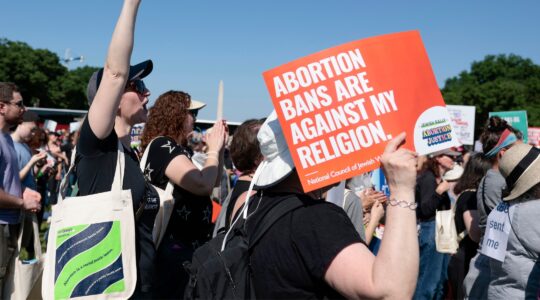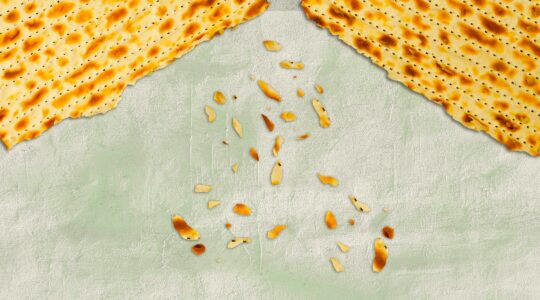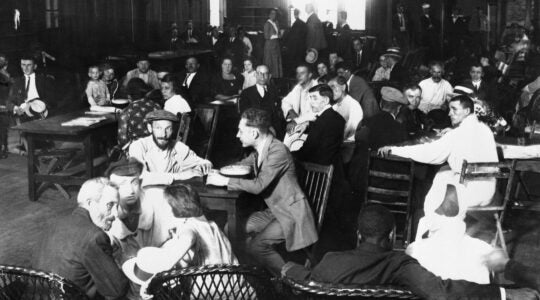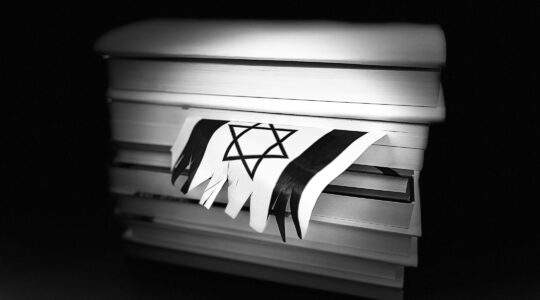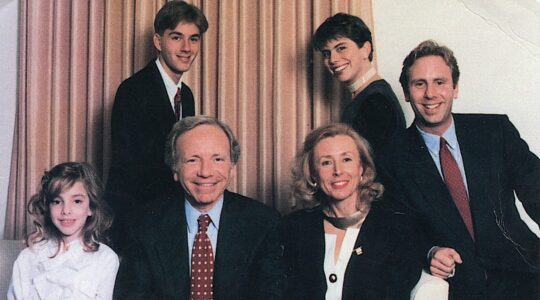WALTHAM, Mass. (Sh’ma) — In a translation that makes the complex seem simple, Anglo Jews call the fourth book of the Torah “Numbers.” Although counting and numbers play a role in the biblical account of our people’s story, the Hebrew name of this book — B’midbar, or ”in the wilderness” — is a more apt descriptor of our physical and spiritual wandering in the desert.
Nevertheless, the English translation captures what has become an obsession, carried through to the modern era, in counting our numbers.
Over the past several decades, the American Jewish community has invested more funds in sociodemographic studies of the Jewish population than it has in any other form of systematic social research. In recent decades, major national studies of the size and characteristics of the American Jewish community have been conducted in parallel with the 1990 and 2000 U.S. censuses. It also has become common for local Jewish federations to sponsor decennial studies of their populations.
Although I have benefited from communal support to conduct some of these studies, I am a reluctant contributor to this knowledge base. Knowing the number of Jews in the United States and in local communities is far less interesting and important than understanding their character. Unfortunately, conducting demographic research has drained attention and resources from the task of better understanding the dynamics of communal engagement and the effectiveness of our efforts to engage and educate new generations.
Key to my pessimism with our counting obsession is that we have not been able to conduct very good studies. Modern demographic studies often are treated as if they are censuses that yield actual counts. But they are surveys of a “rare” population and are strongly affected by coverage and nonresponse errors that can provide misleading results. “Who is a Jew?” questions notwithstanding, it’s extremely difficult to locate Jews and to estimate accurately their numbers.
When the Israelites were wandering in the desert, b’midbar, their number was counted initially to assess military strength. The contemporary American version is to count our numbers so that we know how to plan for communal needs. But planning requires an understanding of who the people are and what they need. It requires the ability to look “backward” at how Jewish identity and engagement have evolved and, at the same time, the capacity to look forward and predict the future.
Even if we could overcome challenges to locating a representative sample and develop accurate “point estimates” of the number of Americans who claim Jewish identity, our data would be insufficient.
What, then, would be useful and what is feasible in terms of resources and methodology?
One approach is to synthesize existing data from dozens of surveys that ask questions about religious and ethnic identity. This approach enables us to have accurate data at a relatively low cost and, equally important, to track population changes over time. But the demographic data does not shed much light about the Jewishness of the population or the impact of changes in communal structure.
To understand those issues, we are conducting additional studies with representative, albeit imperfect samples, that allow us to track longitudinally how Jewish identity and behavior change.
What is essential about any research is that it enables comparison. In the case of population numbers, assessing trends — the growth or decline of the community — is more important than the actual numbers. It is the comparison of population estimates over time, not the numbers themselves, that are most significant.
Similarly, being able to compare those who engage with the community and those who don’t — and identifying the causal factors — is the basis for policy analysis. A new generation of studies is needed.
New ways of doing and understanding research on American Jewry will provide not only a number-based account of the community’s evolution, but also the analytic base for understanding how we are acculturating and preserving Jewish tradition. It will assess our strength in spiritual and intellectual prowess as well as our numeric strength. This research will provide tools to understand how we relate with one another, and how we relate with Jews in Israel and around the world.
Parashah B’midbar describes God’s instruction to Moshe, “Se’u et rosh kol adat bnai Yisrael” — “Take a census of the whole Israelite community.” The instruction is not simply “Moshe, tell me how many people you have … give me a number.” It is far more profound. Literally, the text translates as “Lift up the head of the Israelite community.”
The biblical injunction should be the byline of social scientists who aid the community in their research. We need to uplift the community with knowledge and, in so doing, contribute to a vibrant future.
(Leonard Saxe is the Klutznick Professor of Contemporary Jewish Studies, chair of the Hornstein Jewish Professional Leadership Program, and director of the Steinhardt Social Research Institute and the Cohen Center for Modern Jewish Studies at Brandeis University. Reprinted from Sh’ma: A Journal of Jewish Responsibility (www.shma.com www.shmadigital.com) October 2010, as part of a larger conversation about the ways Jews Count.)

